
https://www.youtube.com/watch?v=akBpQ-A7mCQ
How To Go Faster Than Light Speed (Seriously…)

Thank you to Foro for supporting PBS .
Wow .
Oh , smart people , Joe .
Here , this is an active nuclear reactor and down there are uranium fuel rods undergoing fission reactions .
The blue glow that you see is not from the radioactivity itself .
If there's not some blue light bulb down there and make it look cool .
Wow .
Oh , ok .
That was amazing .
I should probably explain what happened though .
You are watching what happens when matter travels faster than the speed of light .
Yeah , I'm serious .
I can already hear you typing your comments .
Ok .
You may have heard that nothing can travel faster than the speed of light .
It's the fastest speed there is , right ?
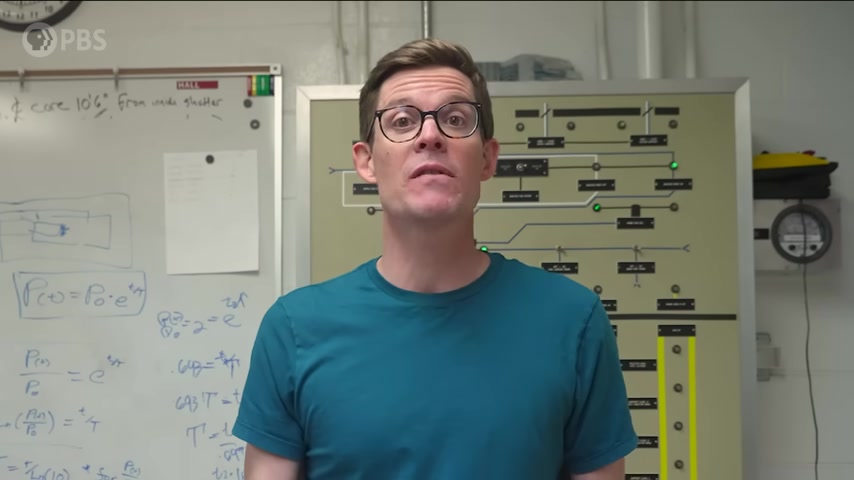
Not exactly things can travel faster than the speed of light right here on earth .
And when that happens , it looks like this , that glow is the echo of matter moving faster than light speed .
It's true .
This bizarre phenomenon is real and this is how it happens without breaking any laws of nature .
Now to move something faster than the speed of light , there's one trick that you need to do first , you have to slow light down .
This is the number that we think of as the speed of light c but more accurately , this is just the speed of light travels in a vacuum .
And it's true .
Nothing can go faster than that .
But light doesn't always travel at that speed .
Anytime light travels through something transparent , it slows down .
Now , if you think about it , technically , whatever speed light is going is the speed of light .

But when that light passes through something like water glass , even air , it's not the fastest possible thing anymore .
The reasons why this happened are astonishingly strange and they require you to think about light a bit differently than you might be used to .
So why does light slow down when passing through stuff just going on intuition ?
You might think , ok , when a moving thing cruising along hits a denser material , it's going to get bogged down .
There's more resistance , right ?
As if you're sledding down an icy hill and you hit a patch of mud , you're gonna lose some speed .
But this isn't what happens to light .
Even though light slows down in a medium like glass , it comes out the other end and instantaneously , it's moving just as fast as it came in .
So that analogy with the sled doesn't quite work .
OK .
Maybe we can imagine photons of light passing through a medium bouncing off of particles like a pinball machine before popping out the other end .

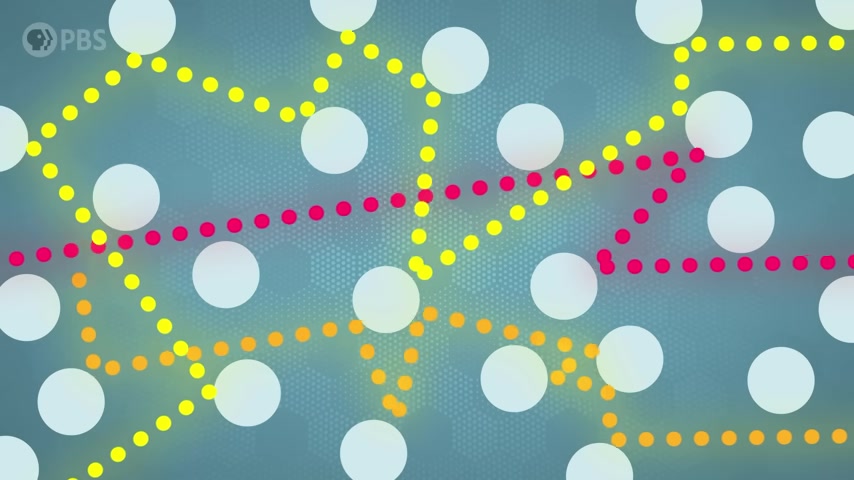
If that were true light could still travel at sea , the fastest speed there is , but it would be taking a longer path from A to B which would take longer .
But if that were what was happening , a beam of light entering glass or water would get scattered in all different directions .
And that isn't what it actually does .
So our pinball model can't be right either to understand what's actually happening here .
We need to understand how electromagnetic waves like light travel across space .
You can think of a light wave as being made of both an electric field and a magnetic field .
Both are oscillating or wiggling in different directions .
These fields are directly related to each other .
A changing electric field produces a changing magnetic field which produces a changing electric field .
And so on this relationship between electric fields and magnetic fields is a fundamental property of the universe .

Now , as these two oscillating fields move across space , that is what is known as an electromagnetic wave .
The speed that this wave moves across space is determined by how well those wiggling electric and magnetic fields can create each other in a vacuum .
There's nothing to get in the way of this feedback loop .
So the electromagnetic wave we call light moves as fast as the universe will let it the ultimate speed limit C .
But if that light wave passes through a medium like water , the light's electric and magnetic fields jostle the atoms and molecules of the water to create their own electric and magnetic fields and well , that creates a mess .
All these fields tugging on each other essentially makes it harder for lights , electric and magnetic fields to generate each other .

Compared to if you're in a vacuum with nothing in the way , what we observe as a result of all of this is that whenever light passes through a transparent medium , it slows down , light travels at this slower light speed the whole way through the medium .
But because it doesn't get permanently altered by all of those other fields , it interacts with .
As soon as the light wave gets to the other end , it shoots back up to its original speed .
If your brain is hurting a tiny bit right now , that is a completely normal reaction .
This stuff is really weird .
Now , how much the light slows down depends on the material .
In air light travels just a smidge below the speed of light in a vacuum .
But in water , the speed of light is a full 25% slower and we can make particles travel faster than that , which is what is happening in a fission reactor .


And down below uranium is getting split apart and releasing a bunch of heat radiation and high speed particles like negatively charged electrons and their positively charged counterparts as positrons .
Now , as those charged particles move through water , whether they're going fast or slow , they pull on the water molecules so that the charges kind of align .
It's like if a celebrity walks through a crowd and everyone turns to look for a moment , all the bodies are aligned .
Then after they pass by , everyone turns back to whatever random direction they were facing .
You know , when those water molecules relax back to whatever orientation they were before the charge particle passed by , they give off a pulse of light .

If the charge particle is moving slower than whatever light speed is in that material , we can't really see that ripple of light just radiates outward and dissipates kind of like the ripples spreading around a swan that's drifting slowly across a lake on .
But now imagine the swan hits the turbo and starts screaming through the water faster than the ripples can expand .
The ripples get all bunched up along the leading edge .
This is a shock wave , we can see the same thing in 3D with sound .
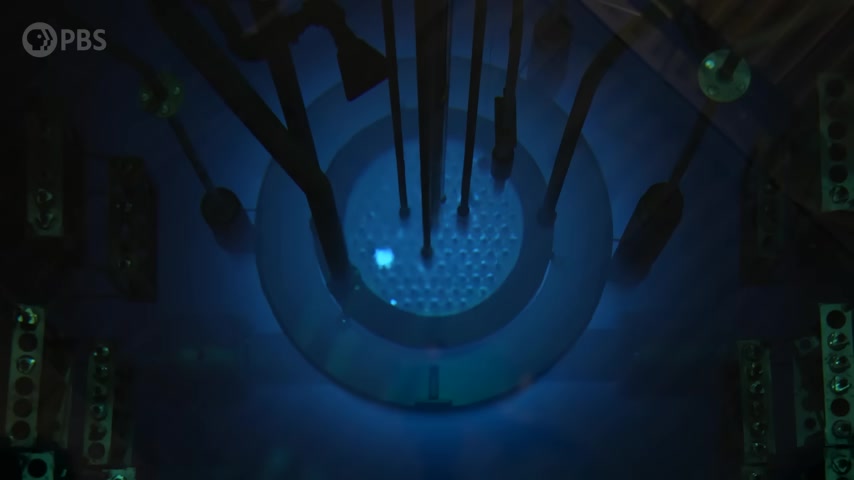
If a jet or a bullet travels faster than the speed and the sound waves can travel , then those sound waves bunch up and create a shock wave that we hear as a sonic boom in the pool around the reactor , something similar is going on with light in that reactor , electrons and positrons can shoot out from those fission reactions faster than the speed of light in water .
And as those particles tug on the water molecules , the ripples of light given off are moving slower than the particle is .
So they pile up along that front edge , a shock wave just like a sonic boom except you see it instead of hear it a photonic boom .
Maybe that's what that blue light is .
The first person to see this that we know of anyway was Marie Curie .

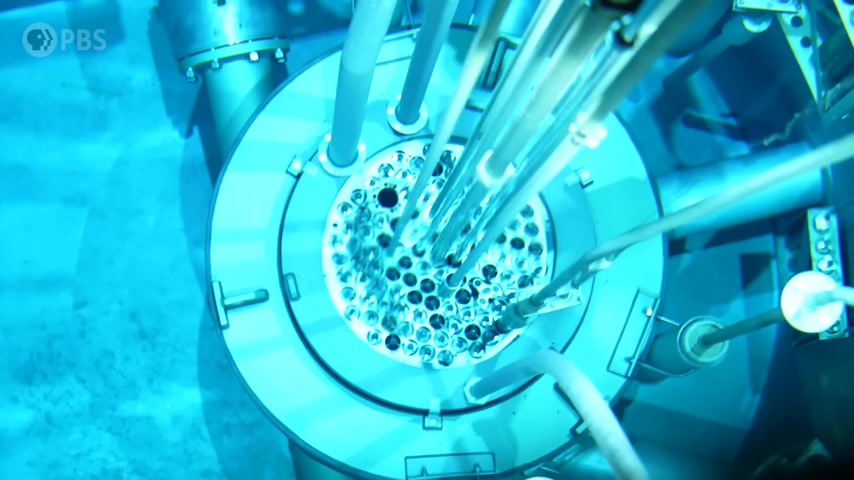
But it wasn't until the 19 thirties that the Soviet physicist Pavel Chekov finally explained why it happens , which is why today we know this blue glow as Chekov radiation .
Now here in this nuclear reactor , Chekov radiation is mostly just a fun side effect .
But Chekov's discovery actually won the Nobel Prize in 1958 .
And one reason that it was so important was because it opened a whole new window to the universe every day .
High energy particles like neutrinos and cosmic rays launched long ago by distant supernovas stars and black holes rained down on earth , something like a million cosmic rays pass through your body every night while you sleep and trillions of neutrinos are flying through me and you , every second astronomers have been wanting to know where all these high energy particles come from for a long time .

Unfortunately , it's not that easy to study something that's not only invisible , but that whizzes by or through you at nearly the speed of light .
But luckily those high energy particles can give off sharing COV radiation .
So that gives us a way to see them .
Chekov detectors are big high tech thingies full of water as high energy particles shoot into them traveling faster than light can travel in that medium , they create a cone of Sharonov radiation like a wake that we can detect .
In other words , cherry Cov radiation , this strange phenomenon that happens when things move faster than the speed of light is literally shedding light on invisible realms of the universe .
That's pretty cool .
Think here it is .
I'm glowing with .

Thanks for everybody who supports the show on Patreon .
There's a link down in the description where you can learn more how you can support the show , help us make episodes like this one and who knows whatever interesting thing we will do .
Next .
One of our perks is you get to see these videos before anyone else .
And by getting in there early , you help other people discover these videos and that creates a wonderful little feedback loop that will make the world a smarter place .
Don't you wanna be part of that ?
Yeah , go click it .
See you in the next video and thank you to for , for supporting PBS .
When you think of inventions that define the world around us , the beauty and well-being industry might not be the first to come to mind .
But if you made a ven diagram of where beauty and technology meet , you'd find a company from Sweden called for they make skin care devices .
They sent me this one right here .
One thing it does is create what they call t sonic pulsations .

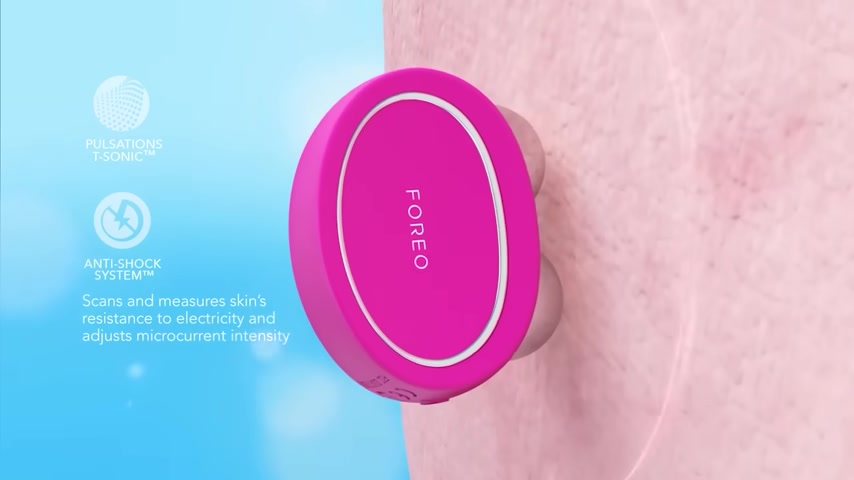
Basically , this makes low frequency vibrations that travel through the outer layers of the skin to help relax , facial and neck muscle tension improve blood flow .
This also has what they call microcurrent technology .
It creates a safe low voltage , electrical current , totally painless .
And there's dozens of muscles in your face and neck and that microcurrent stimulates those .
It's like it's like a workout for your facial muscles and skin that can tone and smooth out that epidermis .
You're always showing everybody .
This is called the bear by four .
It looks a little bit like a bear .
It's the world's first FDA cleared medical microcurrent device .
It's got an antishock system .
So if that ven diagram of beauty and science is something that you're into , you can check this out for you or as a gift , the bear by four is available online or in stores .
Just check the link down below for more info .
There you go .
Literally shedding light , which feels pretty good .
That's dumb .
Start this off with me .

Glowing blue like a happy face .
So excited .
Are you looking for a way to reach a wider audience and get more views on your videos?
Our innovative video to text transcribing service can help you do just that.
We provide accurate transcriptions of your videos along with visual content that will help you attract new viewers and keep them engaged. Plus, our data analytics and ad campaign tools can help you monetize your content and maximize your revenue.
Let's partner up and take your video content to the next level!
Contact us today to learn more.